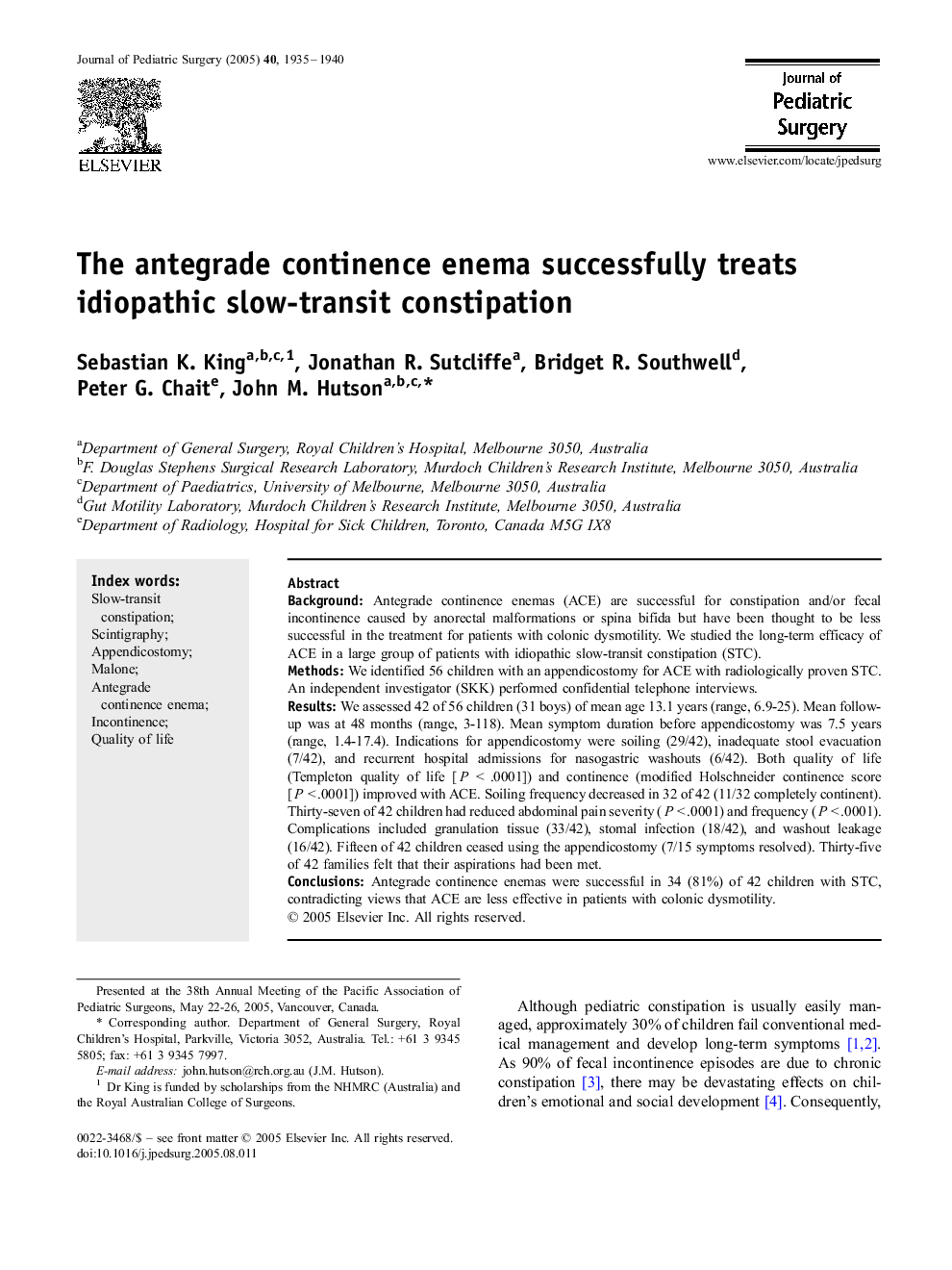| Article ID | Journal | Published Year | Pages | File Type |
|---|---|---|---|---|
| 4160882 | Journal of Pediatric Surgery | 2005 | 6 Pages |
BackgroundAntegrade continence enemas (ACEs) are successful for constipation and/or fecal incontinence caused by anorectal malformations or spina bifida but have been thought to be less successful in the treatment for patients with colonic dysmotility. We studied the long-term efficacy of ACE in a large group of patients with idiopathic slow-transit constipation (STC).MethodsWe identified 56 children with an appendicostomy for ACE with radiologically proven STC. An independent investigator (SKK) performed confidential telephone interviews.ResultsWe assessed 42 of 56 children (31 boys) of mean age 13.1 years (range, 6.9-25). Mean follow-up was at 48 months (range, 3-118). Mean symptom duration before appendicostomy was 7.5 years (range, 1.4-17.4). Indications for appendicostomy were soiling (29/42), inadequate stool evacuation (7/42), and recurrent hospital admissions for nasogastric washouts (6/42). Both quality of life (Templeton quality of life [P < .0001]) and continence (modified Holschneider continence score [P < .0001]) improved with ACE. Soiling frequency decreased in 32 of 42 (11/32 completely continent). Thirty-seven of 42 children had reduced abdominal pain severity (P < .0001) and frequency (P < .0001). Complications included granulation tissue (33/42), stomal infection (18/42), and washout leakage (16/42). Fifteen of 42 children ceased using the appendicostomy (7/15 symptoms resolved). Thirty-five of 42 families felt that their aspirations had been met.ConclusionsAntegrade continence enemas were successful in 34 (81%) of 42 children with STC, contradicting views that ACEs are less effective in patients with colonic dysmotility.
